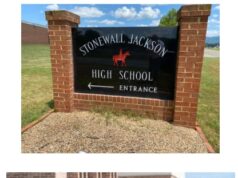It’s been a long, long time since I wrote a post here at Blue Virginia. The election of Donald Trump, the excitement of Indivisible, and the energy of Virginia Democrats going into this election year has drawn me back. I have had a number of thoughts for what I believe needs to be said among the Blue Virginia community, but the length of time since I last regularly blogged has created a writer’s block (or maybe it’s a wall?) I have wanted to speak out the negative tone from Northam surrogates, such as Dick Saslaw and Terry McAuliffe, and the concerns I have for how it will dispirit our newly energized party. Similarly, the lack of leadership from our statewide elected officials on the environment and fighting against Trump’s climate rollback has been disappointing. But I’m going to rejoin the Blue Virginia community by trying to be positive about the year ahead.
This could be a YUGE year for us.
Back in December, 2013, I made this observation about the challenges facing us in state and local elections.
Roxann Robinson in the 27th hasn’t seen an election since winning a special election in 2010. In fact, the 27th hasn’t seen a contested general election in a long time. Previous Republican Delegate Sam Nixon had held the district uncontested since winning it in a special election in 1994. Elsewhere, Republican Tommy Wright hasn’t been challenged in over ten years, since 2001. The biggest winner of this do-nothing political system? Riley Ingram, who hasn’t been challenged since 1995!
When the 27th became open during a special election in 2010, the Democratic Party ignored the district and instead devoted resources to a more Republican district in Harrisonburg. At the time, the 27th was a district where Barack Obama had won. Focusing more on candidate than district, Ward Armstrong and his advisers decided to spend $60,000 in the more Republican district where they liked the candidate. In 2010, Ben Tribbett wrote on the 27th:
“This is a seat that is more Democratic than the 26th, would be tougher to tear up in redistricting, and is exactly the kind of area Democrats need to win to take back the House. Instead, we are not even competing. Which tells you all you need to know about where Democrats are in the House of Delegates right now and how their immediate future looks.”
Where are we in 2017?
All three of those seats got challengers in 2015. While Republicans won them all, in both the 27th and 62nd our Democratic challenger broke 40%. I’m not advocating these as top tier races this year, but we not only have a candidate in the 27th, but two candidates in the 62nd. In the 62nd Trump won by 5% and it doesn’t look like it will be highly competitive. But in the neighboring 27th district, also in Chesterfield County, Trump only won by 2.4% and Hillary ran 5.7% ahead of Obama’s 2012 numbers.
As Lowell has been tracking, the Democratic Party of Virginia and our House Caucus has made amazing strides with candidate recruitment this year. We have Democratic challengers in every Clinton-won district. The Trump implosion, the vigor of our movement, and the strength of our candidates have already scared off three Republicans, David Albo, Mark Dudenhefer, and Jimmie Massie. We have some amazing candidates; I’m personally a big fan of Chris Hurst in the 12th, but I’m sure you have your favorites as well.
Candidate recruitment is just the first step, down-ballot Democrats need to find better ways to ride the coattails from the top of the ticket. As I wrote after the 2013 election, our successful Democratic candidates were clustered in districts where McAuliffe won more than 55% of the vote, a threshold we’ve seen in both Democratic and Republican gerrymandering schemes. We later lost the two exceptions to that, the 2nd and the 100th. While I’m optimistic about the 2nd this fall, the trends in the 100th have not been good. Not only has the district trended away in the recent 2016 election, Hillary winning by just under 3% when Obama won it by over 10%, it has consistently underperformed in the lower turnout gubernatorial elections. It was also one of only three districts that went McAuliffe-Obenshain in 2013.
Lowell has his own rankings of the districts and I am similarly bullish on the top, over 55% Clinton districts: the 42nd (Albo’s open seat), the 67th (LeMunyon), the 2nd (Dudenhefer’s open seat), and the 32nd (Greason). I am more concerned about seats like the 13th, where we have consistently seen lower turnout in gubernatorial years. As I wrote in 2013:
In 2009, Deeds ran statewide roughly 11 points behind Obama’s average performance and was close to this expected performance in most delegate districts. But in the 13th District represented by Bob Marshall, Deeds was 5.61% behind his expected performance. Four years later, while winning statewide with a coalition that closely resembled Obama’s winning formula, McAuliffe ran 4.73% behind his expected performance in the 13th district as well. The 13th is the poster child for a district where a growing minority population has turned a seat blue in high turnout years, but hasn’t caught up (yet) in lower turnout years.
Another seat to look at is the 2nd, where Futrell was elected by just 223 votes. In 2009, Deeds ran 5.49% behind his expected performance, an indication of turnout problems very similar to the 13th. In 2013, McAuliffe ran 3.37% behind. This is a 58% Obama district, strongly Democratic in high turnout years, but more conservative if turnout doesn’t occur in the right Democratic-leaning communities.
In fact, all of Deeds’s worst performing districts had minority-heavy areas in Prince William County: 52nd (Torian), 50th (Miller), 13th (Marshall), and 2nd (Futrell). Even with McAuliffe’s win, Prince William was a problem for turnout in the campaign. McAuliffe’s worst performing districts were more diverse, ranging from the 16th outside of Danville (the open seat that elected Adams), to the 13th, and the 22nd (Byron), 30th (Scott), 19th (Austin), 2nd (Futrell), and 14th (Danny Marshall). If there is a theme, it’s that problems with Prince William turnout continue, and we also see problems in Danville and Southside. Deeds did not do as poorly in Danville and Southside, probably because he was running better with Southside whites and able to compensate for lower black turnout.
Is there a trend to where both McAuliffe and Deeds both do worse? Here’s what I’ve found. We’ve talked about the 13th and 2nd in Prince William, and also the 50th. Another cluster is in the exurbs of Stafford and Spotsylvania: 54th (Orrock), 88th (Cole), and 28th (Howell), and the neighboring 30th (Scott) in Culpeper and Orange.
If Democrats can build on the energy of the Indivisible movement, with the continued unpopularity of President Trump, we may see a significant shift in Democratic turnout. Republicans are already running scared in special elections in both Georgia and KANSAS. Defeating Bob Marshall in the 13th, and picking up similar seats like the 51st (Anderson), 50th (Miller), and 31st (Lingamfelter), will depend on turnout and the energy behind the Democratic ticket in the fall. The 94th down in Newport News is in the same list.
We may be on track to see four or five seats flip in a “normal” year, with the upside of significantly more. Lowell’s list is good of seats that could be in play because of a wave, but it’s missing one district because we don’t have a candidate. If I could, magically, wave a wand and come up with a new Democratic recruit in a district that’s currently unchallenged, I’d pick the 76th down in Suffolk and Chesapeake. Delegate Chris Jones is unchallenged and it is certainly a Republican district: Trump won 52% to 44%. But Clinton’s margin was a little under 2% closer than Obama’s from 2012, which was similarly an improvement compared to his 2008 performance despite his decline elsewhere.
South of the James River, Obama’s 42.76% in the Suffolk and Chesapeake based 76th district jumped to 44.77%. It’s still a Republican district, but it stands out as a surprisingly close district in the governor’s election as well: McAuliffe 47.10% to Cuccinelli’s 47.63%. Although certainly some of that margin is due to Sarvis, the Attorney General’s race was a close 47.28% for Herring and 52.72% for Obenshain. In fact, this was also a district where Deeds did better than expected, and McAuliffe did much better than expected. Given the trends in Suffolk and Chesapeake, we also see Democratic trends in the 14th State Senate seat, even though it’s still very Republican.
Warner received 47% of the two party vote here, almost 5% ahead of Obama’s numbers. As noted above, in off-year elections Virginia Democrats have done better, not worse, than expected, unlike the other districts discussed above. In a good election year our gubernatorial candidate is likely winning 45% to 47% of the vote, if not higher. This is a seat that’s in the same range as the 85th, held by Holcomb, that Lowell highlights in his list.



![Video: Former Eastern District of VA Federal Prosecutor Gene Rossi Asks, “Is Donald Trump going to be the lead counsel in that prosecution [of Jim Comey] and do the opening, closing and rebuttal? I pray that he does!”](https://bluevirginia.us/wp-content/uploads/2025/09/rossiedva-238x178.jpg)







![Saturday News: “Trump’s latest tariff TACO probably won’t make your life more affordable”; “The Epstein Email Cache: 2,300 Messages, Many of Which Mention Trump”; “[MTG] questions if Trump is still the ‘America First’ president”; “Jim Ryan tells all: ‘What did the Governor know, when did he know it?’”](https://bluevirginia.us/wp-content/uploads/2025/11/montage1115-100x75.jpg)

